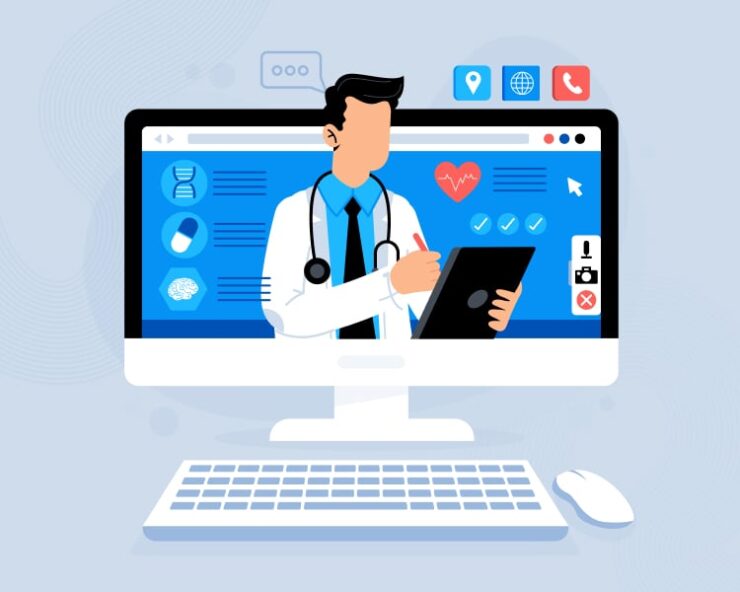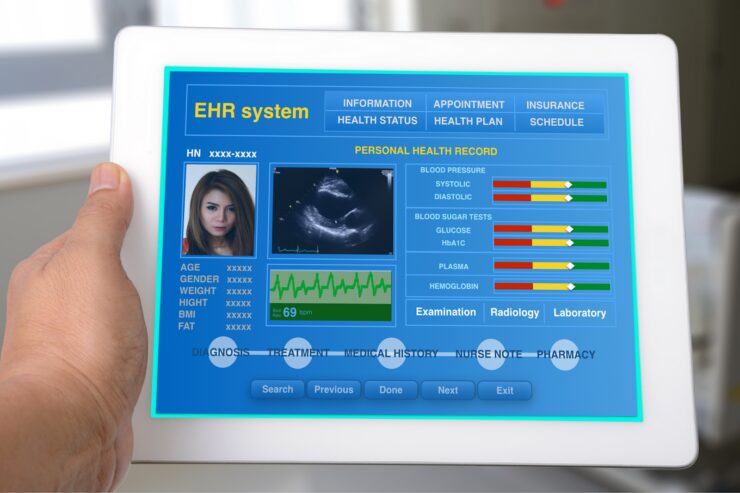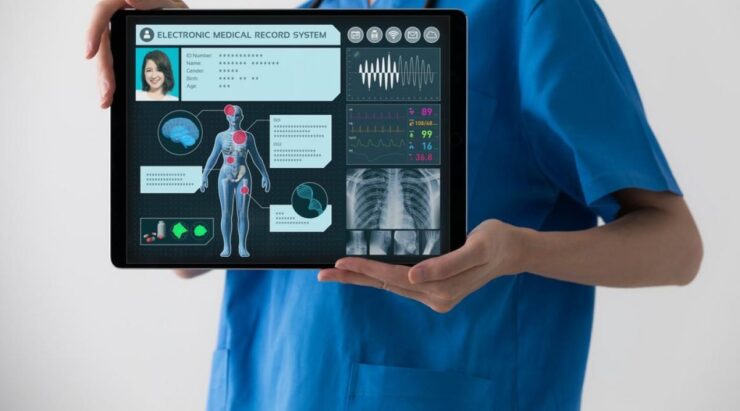If you’re a healthcare provider looking for ways to reduce your environmental footprint, digital medical records may be your answer. You no longer have to worry about wasting resources on paper-based medical records; with the right technology, you can start reducing waste and improving care today.
Let’s explore the benefits of switching to digital medical records!
What are Digital Medical Records?
Digital medical records, also known as Electronic Health Records (EHRs), are electronic records of patient health information that are created, stored, and updated electronically. These records include data on demographics, medical histories, summaries of progress notes, lab results, medications prescribed, and immunizations administered. This type of record enables a healthcare provider or an organization to retrieve and update essential information about a patient’s health in order to inform decisions and ensure continuity of care.
Benefits of Switching Going Digital

Making the transition to digital medical records offers numerous benefits, some of which could help Medical Waste Management. For example, more efficient storage helps avoid the need for wasteful paper storage. One of the primary advantages of digital documents is that they can be updated and shared instantly with any other provider involved in a patient’s care, increasing patient care while also avoiding redundant paperwork.
The ability to switch to digital medical records provides improved power over healthcare options and information management for both doctors and patients. Doctors can quickly access information without having to physically maneuver countless pages of paper documents at each visit, providing a much more efficient workflow for healthcare providers. Additionally, it may help reduce the amount of time needed to diagnose and treat patients due to quicker retrievable data. This can lead to improved health outcomes for patients who actively track their visit histories digitally with their doctor.
For long-term savings, limiting printing can naturally lead to a drastic reduction in paper use and lower energy costs associated with storing hard copies over years or decades in most cases. By eliminating physical document storage altogether, clinicians cut down on waste management costs as well while allowing an improved way of transparency regarding patient data integrity since it is much easier to calculate which user has last touched or modified each record’s history with an electronic audit trail feature than finding manual calculations through documents themselves.
How Digital Medical Records Reduce Waste

By utilizing cloud-based medical record systems and electronic health record services, providers can store, manage and share patient information instantly. These systems make it easy to update and view patient information securely while also saving money on storage costs due to their virtual nature. Additionally, they make changes such as prescription updates easier since all required healthcare providers can access the same information at the same time without having to print out or mail out updated documents.
Utilizing digital medical record systems also limits unnecessary waste when it comes to paperwork used for filing purposes or patient charts that are rarely accessed after being created on paper. Since data is digitized once into a cloud platform rather than repeatedly printed onto paper, these wasted materials are eliminated entirely which leads to cost savings for healthcare organizations as well as less wasteful production of documents.
Additionally, automated document destruction accountabilities required by HIPAA legislation become less of a burden with digital tools helping compliance teams adhere to regulations much more efficiently than before while still preserving important patient data security protocols.
What are the challenges?

One of the primary challenges of switching to digital medical records is the cost involved in transferring current paper records into a digital format. Because the implementation process can be complicated and require specialized personnel, hospitals, and other healthcare facilities may need to invest in additional resources, systems, training, and programs. In addition to large upfront costs, organizations may need to concern themselves with long-term upkeep costs associated with keeping digital records secure and up-to-date.
Another challenge associated with digitalization is technology adoption. Healthcare providers must not only understand how various systems work, but also recognize what data needs to be converted. Further, if a healthcare organization hopes for the successful adoption of new technologies then users must be comfortable using them on an everyday basis. There is often a considerable learning curve making practicing medicine more complex than it was before the transition occurred.
Strategies for Implementing Digital Medical Records

To ensure a successful transition to digital records, healthcare providers must develop strategies to accommodate their specific needs.
When it comes to implementing digital medical record systems, there are several strategies that can be effective. These may involve creating personalized health information technology plans, establishing secure access methods, reinforcing privacy and confidentiality standards, utilizing available resources (such as IT teams) for technical support, obtaining patient consent for electronic information access, providing relevant training to staff on data security and management tools related to technology, and developing a communication plan that emphasizes the benefits of transitioning to a digital environment. Furthermore, healthcare organizations must stay up-to-date with security regulations that evolve over time as they handle sensitive patient data.
Through these strategies, healthcare organizations can successfully deploy an efficient digital medical record system that reduces waste while improving overall patient care.
Conclusion
Overall, switching to digital medical records helps to reduce waste associated with traditional paper-based medical records. There are also a number of additional benefits such as improved accuracy, enhanced data security, and easier access to information. Electronic medical record systems can also potentially reduce healthcare costs and make it much easier for providers to deliver better care.
It is important to note that before switching to a digital medical records system, it is important for healthcare organizations to ensure they have the necessary processes in place for data input and collection, as well as proper training and policies regarding the use of their system. Additionally, healthcare organizations must be wary of data breaches and privacy issues that may occur when moving away from physical documents. With these considerations taken into account, however, ultimately digital medical records provide an avenue for increased efficiency in patient care while helping healthcare organizations meet their sustainability goals.

